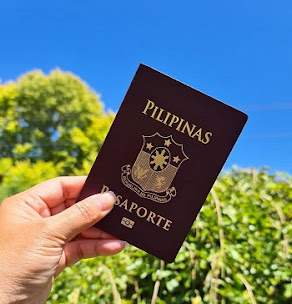Directly translated to “Evening of the Seventh,” the Tanabata is a Japanese festival that hails all the way from the Qixi Festival of China. Also known as the Star Festival, the Tanabata commemorates the meeting of two deities by the names of Orihime and Hikoboshi. These two deities are represented by two stars: Vega for Orihime and Altair for Hikoboshi. There is also a legend surrounding the Tanabata. It is said that the Milky Way separated these two stars that were also lovers. They were only allowed to meet each other once every year, on the seventh day of the seventh lunar month of the lunisolar calendar. Evidently, this is where the idea of the name “Tanabata” originated.
Different parts of Japan celebrate Tanabata on different days. However, the initial festivities usually start on the 7th of July of the Gregorian calendar. Then, the festivals are held on different days, spanning between July and August. The Tanabata is one of the most celebrated festivals in all of Japan.
History of Tanabata
 |
| Credit: Sendai Tanabata Festival Sponsorship |
This festival began in the year 755 when Empress Koken introduced Tanabata to Japan. The idea originated from “The Festival to Plead for Skills,” just a different name for Qixi, which was a festivity back in the land of China. This festival was later on adopted in the Kyoto Imperial Palace since the beginning of the Heian period.
It was during the early parts of the Edo period that the popularity of the Star Festival, also known as Tanabata, grew and spread amongst the general public of Japan. Many a person started to recognize Tanabata when it was mixed with several Obon or Bon traditions. This mixing was because Bon festivities were held on the 15th of the seventh month, which was near the date of the Tanabata. From its growing popularity, the Tanabata grew to have its own festival recognized and celebrated by the Japanese.
Different customs were made during the Tanabata though this depends on the region of Japan. Typically, young girls would make wishes about better sewing and craftsmanship while young boys would make wishes about better handwriting, which was to be achieved by writing wishes on paper strips. Because many things were yet to be developed at the time, the wishes were written using dew left on taro leaves to make the ink. By incident, Bon festivities are now held on the 15th of August in the solar calendar, which is quite close to its original date in the lunar calendar. This has officially made Bon and Tanabata two separate festivals.
The Legend Behind Tanabata
 |
| Photo: from Pinterest |
The Tanabata was based on a sad love story. They say that the festival was inspired by a famous folklore story from the land of China. This Chinese folklore story was known as “The Weaver Girl and the Cowherd.” There were some versions of this story that were included in the Man’yoshu, which is the most ancient extant collection of poetry in Japan. Nonetheless, there is one popular version of the story that many people believe to be the basis of Tanabata.
The story begins with Orihime, also known as the Weaving Princess. A daughter of the Tentei, who is the Sky King or basically the universe itself, Orihime wove exquisite clothes by the bank of the Amanogawa. Literally translating to “heavenly river,
Amanogawa stands for the Milky Way. It is said that Tentei loved the clothes that Orihime weaved, so she worked hard every single day to weave clothes and please her father. Sadly, due to this continuous work, Orihime is saddened by the fact that she is not able to meet anyone and ever fall in love in the process.
Having known of this sadness of his daughter, Tentei was concerned about Orihime. Hence, he came up with an idea, which is to arrange for Orihime to meet Hikoboshi, the Cowman or Cowherd Star. Literally translating to “Boy Star,” Hikoboshi’s home and workplace were on the other side of the Amanogawa. Despite the distance, Orihime and Hikoboshi instantly fell in love with each other when they met.
Shortly after, the couple married each other and lived a happy, married life for a while. However, once they were married, the couple no longer did their original duties. Orihime ceased to weave cloths for Tentei while Hikoboshi allowed his cows to stray and spread all over Heaven. Tentei was not pleased with this arrangement at all. Filled with anger, Tentei decided to separate Orihime and Hikoboshi across the Amanogawa. Meeting each other was also forbidden for the two lovers.
Heartbroken, Orihime started to become despondent as she had lost her husband. She begged for her father Tentei to allow her and her husband to meet again. Moved by the tears of Orihime but still aware of the responsibilities of the lovers, Tentei decided to allow them to meet again but only for a single day every year. On the 7th day of the 7th month, the two lovers were allowed to meet if Orihime continued and finished her weaving.
However, when Orihime and Hikoboshi tried to meet again for the first time after they were separated, they realized that they could not cross the river that separates them because there was no bridge in existence. Deeply saddened by the thought of never seeing her husband again, Orihime cried and cried until a flock of magpies came. This flock of magpies promised to create a bridge with the use of their wings to help Orihime cross the river and meet her husband once every year. However, it is also said if it rains on Tanabata, it would mean that the magpies cannot come and help Orihime. Hence, the two lovers would have to wait for another year to be in each other’s arms again.
In a different version of the story, both Orihime and Hikoboshi were referred to by other names. Orihime may also be known as Me-Tanabata-sama; Asagao-hime , which translates to "Morning Glory Princess"); Ito-ori-hime, which translates to "Thread-Weaving Princess"; Momoko-hime, which translates to "Peach-Child Princess"; Takimono-hime, which translates to "Incense Princess"; or Sasagani-hime, which translates to "Spider Princess." On the other hand, Hikoboshi may also be known as either Kaiboshi or Kengyu.
Traditions, and Wishes Made During Tanabata Festival
 |
| Photo: from Pinterest |
There are various customs and traditions that the locals adhere to during the Star Festival. Generally, the Japanese people write wishes on this special occasion. This can be done in the form of poetry or on tanzaku, which are small pieces of paper. After writing their wishes, the Japanese would hang these on bamboo along with other decorations. Where these wishes are hung is known as the Wish Tree. As the name suggests, it is basically a tree of some sort with wishes as leaves.
The tree, along with the decorations and the wishes, is to be set afloat on a river. Either that or the tree is to be burned during the festival, at midnight, or on the following day. This custom is kind of similar to the one done in Obon festivals wherein paper ships and candles are set afloat on a river. There are also other Tanabata customs depending on the area or region, though most of them are associated with local traditions done in Obon festivals.
Another tradition that the locals do during the Tanabata is to sing the traditional Tanabata song. It goes, “Sasa no ha sara-sara, Nokiba ni yureru. Ohoshi-sama kira-kira, Kingin sunago. Goshiki no tanzaku, watashi ga kaita. Ohoshi-sama kirakira, sora kara miteru.” In English, it translates to, “The bamboo leaves rustle, shaking away in the leaves. The stars twinkle on the gold, and silver grains of sand. The five-color paper strips, I have already written. The stars twinkle, they watch us from heaven.”
A Festival Filled with Food and Konpeito Decorations
 |
| Credit: Sendai Tanabata Festival Sponsorship |
Tanabata Festivals are held on various dates depending on the region. This is because the original date of the festival was based on the Japanese lunisolar calendar but this is actually one month behind the Gregorian calendar. Because of this, some Tanabata festivals are on the 7th of July while others are held a few days around the 7th of August. On the other hand, some Tanabata festivals are actually held on the 7th day of the 7th lunar month of the traditional Japanese lunisolar calendar, which just happens to be in August following the Gregorian calendar.
Huge Tanabata festivals are typically held along shopping malls and streets of Japan, most of which are decorated with big, vibrant streamers. Out of all the Tanabata festivals held all over Japan, probably the most famous is the Sendai Tanabata Festival, which is held from the 6th to the 8th of August. Two of the biggest Tanabata festivals are held in the Kanto region, specifically in Hiratsuka, Kanagawa around the 7th of July, and in Asagaya, Tokyo held before the beginning of the Obon festivities, which is in mid-August.
Tanabata Festivals are also not limited to Japan as other countries now also hold their own Tanabata festivals.
Check your local Japanese community for the latest updates on celebrating the Tanabata Festival locally.

























Post a Comment